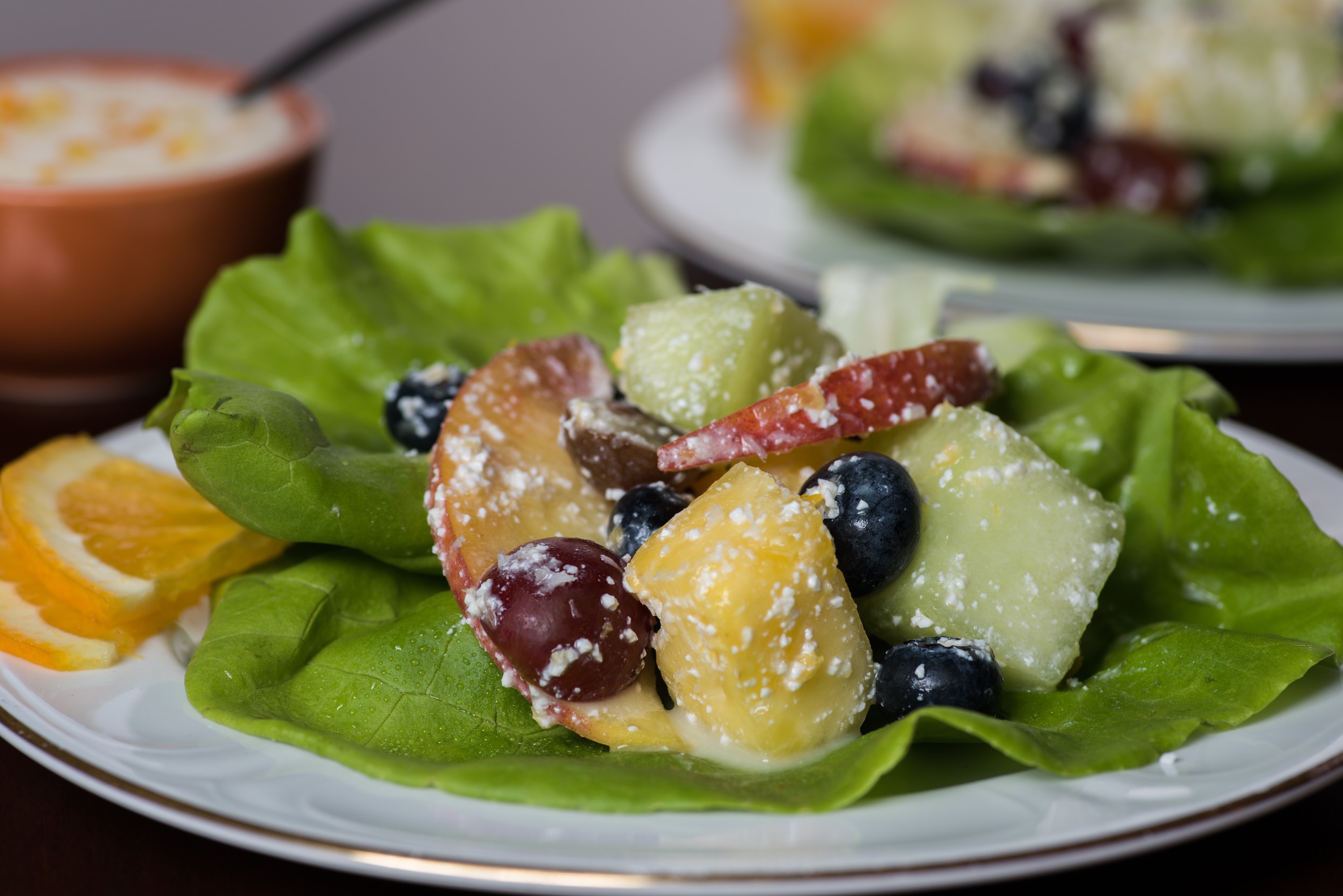Ambrosia is a sweet Southern dessert most often served around the winter holidays. But frankly, my dear, I see it differently. My version transforms this dessert into a slightly savory summertime main dish salad.
 As in traditional ambrosia, I use orange and coconut, but I skip the third historic ingredient, sugar. And what about the marshmallows and maraschino cherries that all you Scarletts and Rhetts recall?
As in traditional ambrosia, I use orange and coconut, but I skip the third historic ingredient, sugar. And what about the marshmallows and maraschino cherries that all you Scarletts and Rhetts recall?
I love tracing a recipe’s roots. Ambrosia’s history is pure Americana. It originated in the 1860s as an elegant and luxurious Dixie dessert made solely with three ingredients considered exotic and tropical—oranges, coconut, and sugar. Still in that vein, later recipes add pineapple and banana. Then after WWI, when creamy marshmallow whip, and eventually individual marshmallows, were invented (in Philadelphia!), they joined the mix. Sometimes whipped or liquid cream was added, too, giving ambrosia a creamy look.
Even though Ambrosia became known from Portland to Philadelphia, it has remained mainly a Southern dish most popular at Christmastime. In the gourmet-crazed 1950s, tinkering with the recipe took off as cooks added everything from pecans and maraschino cherries to mayonnaise, sour cream or cream cheese. Now, with chefs creatively reinventing dishes, I have found versions with blood oranges, cucumber, jalapeños, or avocado, which is at least another tropical fruit.
For a summer salad that is a light meal. It uses tropical pineapple and coconut plus juicy summer fruits—berries and melon. Of course there is an orange, but in the dressing, along with cottage cheese. With no oil in the dressing, I use deliciously creamy full-fat cottage cheese, which adds less than a gram of saturated fat. A splash of balsamic vinegar gives a little kick and a touch of sweetness. Just looking at this salad presented on a bed of tender butter or Boston lettuce cools you.
One thing to watch—if the orange is large, use only a third of it in the dressing or it will be too runny. Slice and add the rest of the orange to the fruit. Also combine the fruit just before serving so the dressing clings.





